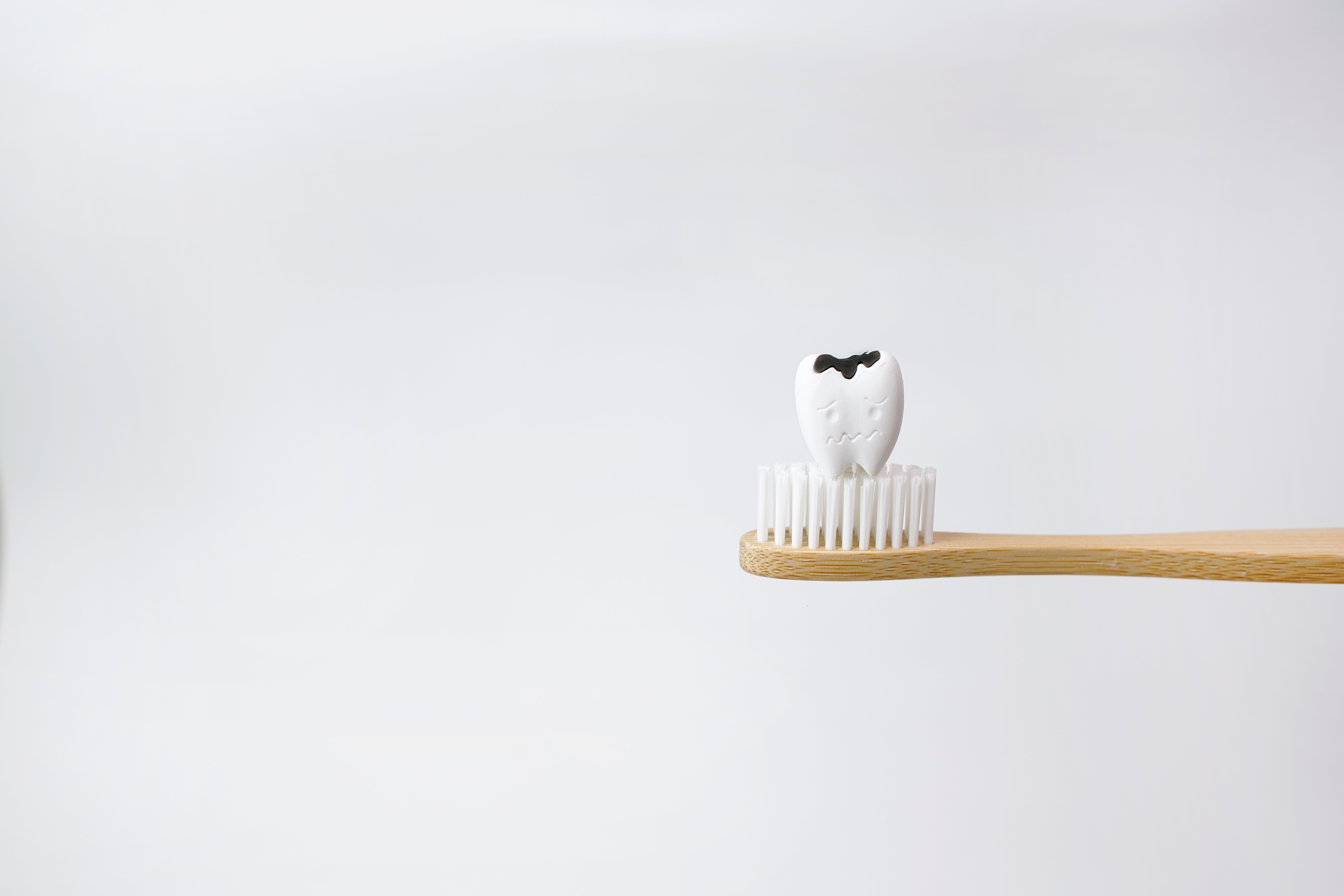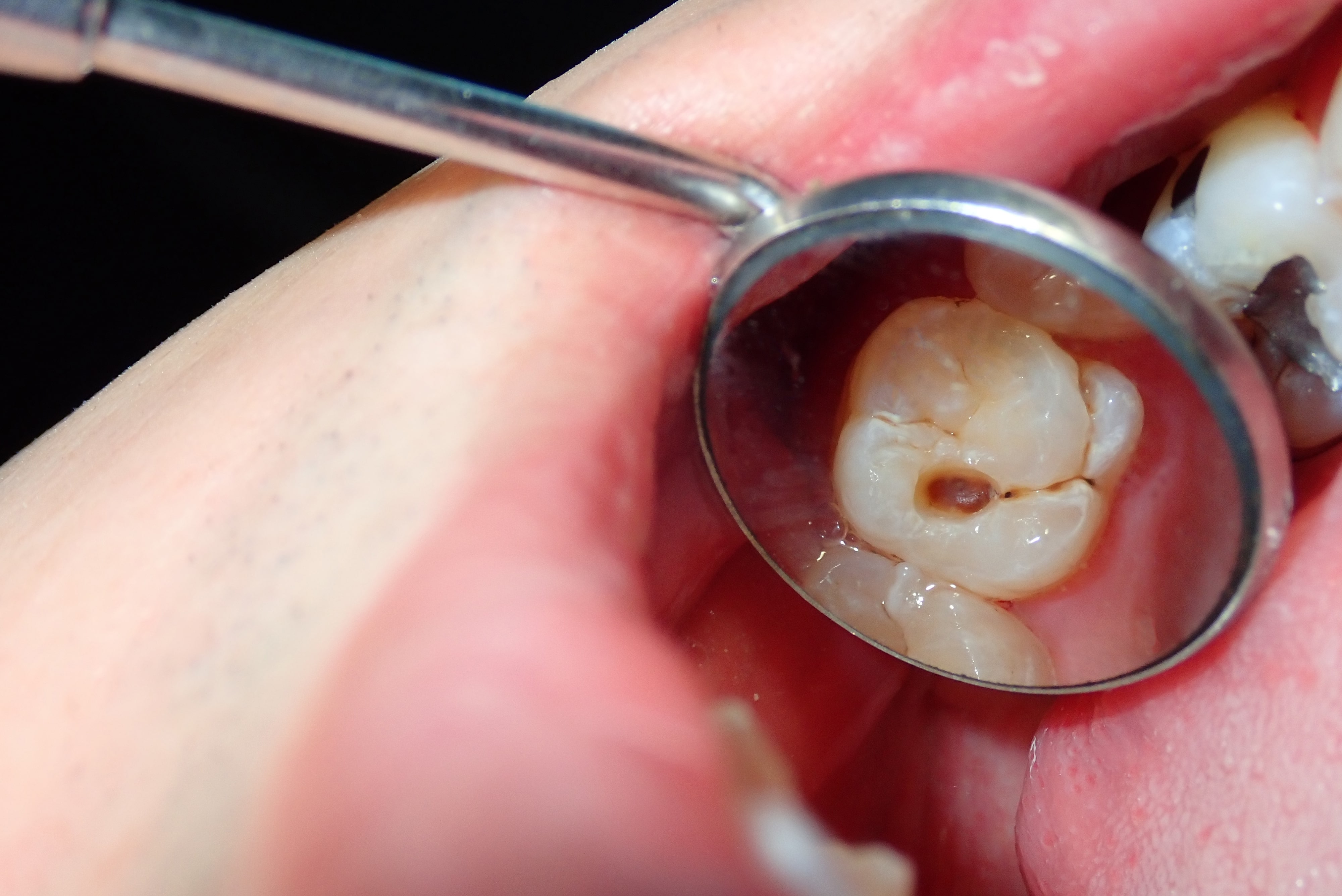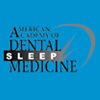Blog
What Is Cosmetic Dentistry?
While many of you may have heard the term, most people don’t know the definitive answer to, what is cosmetic dentistry? Surprisingly, this field of dentistry has been around for many decades and makes up a large portion of the dental work people get done in today’s time.
Moreover, as the world is shifting towards promoting dental health and care, cosmetic dentistry is becoming increasingly popular with today’s youth. Along with dental care, this is also partly due to the advancement of technology and the ability for cosmetic procedures to be performed optimally.
To help you fully understand how the words ‘cosmetic’ and ‘dentistry’ come together, we will be going over what exactly this branch of dentistry entails and how it can help you! So, without further ado, let’s get into it.
What Is Cosmetic Dentistry?
As the name suggests, cosmetic dentistry consists of any type of dental work that is performed with the goal of improving the appearance of one’s jaw, teeth, gums, etc. This covers a broad range of procedures that can be focused on changing anything from the color of your teeth to the alignment of your jaw when you bite down. For example, some prominent dental procedures that fall under this category are teeth whitening, bonding, etc.
As such trends are becoming increasingly popular in today’s time, the term ‘cosmetic dentistry’ is gaining traction and many dentists have become focused on this field. These dentists, sometimes also known as ‘cosmetic dentists,’ specialize in such aesthetic procedures on the teeth, gums, etc.
That being said, while it is a legitimate sub-field, the term has not been medically approved in many places. Due to this, it is used as more of a placeholder to identify a certain type of procedure.
Benefits
To get a better understanding of cosmetic dentistry and why it is so popular, here are some of the benefits you can get from such procedures:
Increased Confidence
An important part of being confident and motivated in your life is dependent on how you look. While it may not be as important for everyone, most people are much more driven and confident in themselves when they have a presentable and clean appearance. Among other factors, this involves having a clean and white smile that can attract compliments from others.
Thus, as cosmetic dentistry is directly meant to improve the appearance of your teeth, gums, and bite, it can be directly correlated to increased confidence and happiness. This is most clearly presented during a study in the National Library of Medicine that goes over the effect of an orthodontic intervention on mental health.
Reduced Pain
One of the first side effects of a misaligned tooth or bad bite tends to be pain. This could be a lingering toothache that doesn’t subside or a sharp pain that strikes when you eat or take a bite. Surprisingly, many aesthetic dental procedures can simultaneously also put a stop to the pain caused by such issues.
This is thanks to various procedures that can re-align your bite and make your teeth much more natural. For example, operations such as reshaping are performed to remove excessively long parts of teeth or fix crooked teeth which can often be a cause of extreme pain. Similarly, other dental procedures like straightening are also known to provide both aesthetic and pain relief.
Improved Oral Hygiene
Imagine you have various crooked teeth throughout your lower jaw and try to brush in between them. Unlike having a symmetrical set of teeth, it can be quite hard to get your brush into the tight and cramped spaces in between these teeth. Due to this, you can often have areas between crooked teeth that aren’t cleaned as well and end up with food particles and plaque stuck in them.
This can not only cause cavities and tooth decay, but can lead to larger problems such as abscesses in the long run. Thankfully, various cosmetic dental procedures such as straightening with braces or aligners can re-align your teeth and allow you to maintain your dental hygiene optimally.
Can Aid With Digestion
The first part of your digestive system takes place when you begin chewing your food as it can make a huge difference in the effort your stomach has to do. The better your bite is, the more your teeth will be able to grind up food before it enters your stomach. Due to this, the more balanced your bite, the smaller you will be able to chew up your food.
This is especially important when it comes to high-fiber foods that can be difficult to digest as the smaller particles can immensely reduce the burden on your digestive system improving your overall health.
Sub-Fields Within Cosmetic Dentistry
Dental work that comes under the umbrella of cosmetic dentistry can often be categorized into two distinct types of dental specialties. These are:
Orthodontics
Orthodontics is the dentistry specialty that deals with misaligned bite patterns, teeth, and jaws. It is focused on correcting, diagnosing, preventing, and managing such conditions which often involve dental work such as straightening, jaw surgery, etc. depending on the type and severity of a patient’s condition.
Prosthodontics
Prosthodontics is a dental specialty that deals with prostheses for dental purposes. This covers a wide range of apparats and procedures ranging from fake teeth to veneers and various others. Most of these are aimed to replace lost teeth and improve one’s aesthetic or dental health.
Common Cosmetic Dentistry Procedures
Now that you have an answer to the question, ‘what is cosmetic dentistry?’ we can delve deeper into what procedures this branch of dentistry entails. Most of these procedures fall under either Orthodontics or Prosthodontics as explained above meaning it will be either focused on the alignment of misaligned teeth/bite or using dental prosthesis. So, the most common procedures are:
Teeth Whitening
By far the most common and also one of the least invasive, teeth whitening or bleaching is commonplace when it comes to cosmetic dental procedures. It involves lightening the color of your teeth which is often done to reduce a yellow tint that can arise due to various reasons. As this yellow coloration is linked with a lack of hygiene, whitening is popular to get back a bright and pearly white smile.
Whitening is also one of the safest dental procedures you can get done and can be done by both a dentist or by yourself. When it comes to personal whitening, most stores offer products such as whitening strips or UV light devices. These products slowly break away at the enamel above your teeth and reveal a whiter layer.
On the other hand, when performed by a dentist such as at our Smiles By Dixon Clinic, you can expect whiter and quicker results. This is because professional whitening is performed with either peroxide gel or with an argon laser which can instantly bleach your teeth and turn them white.
Straightening
Another procedure that you have probably already heard of, straightening refers to the process of aligning one’s teeth by moving them into the correct position based on a person’s jaw and bite. This is performed for various reasons ranging from aesthetic appeal to pain or discomfort due to misaligned teeth.
Over the past few decades, metal braces have been used to perform teeth straightening. This procedure is so popular that at any moment in time at least 4 million people in the US alone will have braces on. These braces are often kept on for various months and re-aligned based on developments to ensure that your teeth are aligned completely and permanently.
However, in recent times, aligners have begun to replace braces as a more comfortable and manageable method for teeth straightening. Aligners are clear, custom-made mouthguards that slowly bring your teeth into the correct position as you wear them. They are preferred due to their ability to be worn and taken off at the convenience of the patient.
Dental Veneers
Veneers comprise of a thin layer of material that is placed over your tooth to provide it with a fuller and more natural look. This is often done to cover teeth that have been damaged, are discolored, or have been worn down due to other reasons.
Veneers are most commonly made out of two types of materials, composite or dental porcelain. Composite veneers are used for shorter spans of time such as 3-4 years as they have a shorter lifespan than their porcelain counterparts. On the other hand, laminate or porcelain veneers are much stronger and can be used to replace multiple teeth for 5 years+ without issue.
Thanks to their customizability and replaceability, veneers are a great way for people to get their complete smile back without having to damage their teeth too much. That being said, the process of attaching veneers can involve some work on your teeth to make sure they fit properly.
Dental Implants
Dental implants are simple prosthetic replacements that can be used to replace gaps or missing teeth. These implants are one of the most common solutions to missing teeth and can completely fix the look of your bite and jaw. Moreover, dental implants can be used for all types of teeth and are customized to ensure they fit perfectly in your jaw.
While dental implants used to be made of various other materials, they are now much sturdier and often used to support false teeth. Most commonly, dentists will use titanium implants as they can be screwed into your jaw without issue and can last for many years without issue. Along with this, these implants are highly unlikely to lead to complications such as infections or damage.
Apart from this, most dental implants are divided into three distinct parts. This consists of the implant device which is the titanium screw inserted into the bone. Following this, the abutment is placed which connects the implant device to the crown. Finally, the crown or fake tooth is attached to complete the dental implant.
Inlays & Onlays
Commonly referred to as indirect fillings, inlays and Onlays are types of fillings that are made for your teeth in dental laboratories. They are used when a tooth has internal decay and needs to be filled to support its structure. Depending on the type of damage, either an inlay or onlay is used.
Inlays are used in case there is no damage to the tooth cusps. In these situations, the inlays are placed on top of the tooth surface and will provide an adequate filling. On the other hand, Onlays are used in the opposite situation when the cusp of a tooth is damaged. Both of these provide support and are pivotal in stopping the decay of teeth or any type of further deterioration.
Gum Lift
A gum lift is a dental procedure in which your gum line is brought up and sculpted in case you have a receding or uneven gum line. This procedure is performed for various reasons and can provide a cleaner/fuller appearance to your teeth. Along with this, a more symmetrical appearance to your gum line can also lead to the appearance of a longer and more even bite.
In addition to the aesthetic benefits, a gum lift can also lead to various health benefits and correct conditions. For example, one of the most prominent conditions that a gum lift can cure is gingival zeniths which are essential in terms of damaging tooth wear. However, gum lifts are also one of the least popular procedures on this list.
Takeaway
We hope that you now understand what cosmetic dentistry is and can make decisions on whether or not you want to improve the look of your teeth. That being said, remember that many cosmetic procedures also provide health benefits and can improve things such as your oral hygiene and digestive health. If you are still confused and want expert advice, click here. At Smiles By Dixon, we can guide you through the procedures so you can make an informed decision about your teeth!
How Do You Know If You Have A Cavity?
A common question that many people end up asking on their first visit to the dentist is, how do you know if you have a cavity? This is often because people tend to miss their first cavity and are shocked when they hear it from their dentist. That being said, while it may be due to a lack of knowledge or prominence, many people don’t take cavities as seriously as they should be taken.
Although, this condition affects millions of people across the globe and can be quite annoying. Moreover, ignoring a cavity will often lead to it worsening, and in some cases, can even lead to more severe conditions. So, to make sure this doesn’t happen, you must be wondering what exactly is a cavity and why does it happen? Well in this article, we’ll be going over the complete guide to make sure you know how to keep your teeth clean and what to do if you end up with a cavity.
What Is A Cavity?
A cavity is an area on the hard covering of your teeth that has developed an opening leading to permanent damage. Also known as tooth decay, these holes can be infested with bacteria that will gradually build up acid in your teeth. This acid then eats away at both the enamel and the internal cavity of your tooth.
Due to this, a cavity that is left alone will continue to grow and cause increased pain until it can become a much larger problem reaching deeper into your tooth. That being said, while they may sound quite distressful, cavities are actually quite common. According to the CDC, approximately 90% of people aged 20 or older have had at least one cavity.
How are they caused
When it comes to their cause, cavities happen due to decay, the presence of bacteria, and a lack of hygiene. Essentially, all these factors tend to go hand in hand to create an environment wherein bacteria are able to break the outer enamel of your tooth with acid and create a small opening. Among others, the most common bacteria known to cause tooth decay found in cavities is Streptococcus mutans as well as various Lactobacillus in later stages.
Based on the type of bacteria and area in which the cavity is, they can also form in different ways. These differentiations lead to varying types of cavities which are all known to have different effects and should be treated differently. Let’s look into the three primary types of cavities.
Types Of Cavities
Smooth Surface Cavity
As the name suggests, smooth surface cavities occur on the smoother parts of your teeth and thanks to this, are also the most manageable. This is because they are highly accessible and can be cleaned with the help of normal dental hygiene methods such as regular flossing. These are also the easiest to prevent and as long as you don’t allow too much plaque build-up, you won’t have to worry about these cavities.
Pit & Fissure Cavity
One step further from the previous type, pit and fissure cavities happen when bacteria and food build-up lead to a larger pit or hole. Often found in the molars, these cavities can be quite difficult to deal with as they will gradually fill up with more sugar, and food, causing them to grow larger. Subsequently, these cavities can also become quite painful and need to be treated immediately after detection.
Root Cavity
The most problematic type of cavities, root cavities are the ones that have managed to decay all the way into the root of your teeth. This leads to exposed nerve endings without the protective enamel that covers outer layers which can cause two major issues, immense pain, and rapid spread. Due to the combination of these two factors, root cavities need to be treated ASAP otherwise they can lead to immense and permanent decay of your teeth.
Factors That Increase Your Risk Of Getting A Cavity
While many people maintain their dental health and don’t seem to have too much plaque build-up, you might be wondering why so many still get cavities. This is due to a variety of reasons that increase the risk of getting cavities. Here are some factors that can make you more likely to get a cavity:
Sugary/Sticky food or drink
The most common culprit and a risk factor for getting cavities, sugary foods, or ones that have a sticky texture can wreak havoc on your dental hygiene. This is because such foods can cling to your teeth for extended periods of time and with their high sugar content, promote bacterial growth and cavity formation. Here are some of the worst foods for your teeth.
Eating after brushing at night
One of the primary reasons it is important to brush your teeth is to get rid of food particles and plaque build-up between your teeth. Now, let’s say you eat a meal after brushing your teeth and go to sleep. In this situation, it is likely that the leftover food particles will be stuck between your teeth overnight which can easily promote bacterial growth and lead to tooth decay.
If you are too young or old
Surprisingly, your age can also be a factor when it comes to how susceptible you are to getting a cavity. This is because when you are very young or old, your gum development is often much less than a person in their 30s or 40s. This gum development is an important defense against root decay due to which people at younger or older ages can get cavities much more easily.
The location of your teeth
Unlike the others, this risk factor is one that affects all of us and is more specified towards the chances of individual teeth developing cavities. Essentially, as cavities are directly linked to stuck food or a build of plaque that can promote bacterial growth more food means more risk. Due to this, teeth with grooves or pits tend to be more prone to cavity growth as they can hold more food particles.
Along with being able to collect more unwanted particles, these grooves are also harder to clean and the combination of this makes them much more susceptible to cavities.
How To Avoid Cavities (Prevention)
Avoiding risk factors is one thing, but to ensure that you can truly avoid cavities, there are various things you can do to prevent tooth decay from happening in the first place. Some things you can do to avoid cavity development are:
Use fluoride toothpaste and brush twice daily
To avoid having large gaps where bacteria and food particles can begin eating away at the protective layer above your teeth, you should brush your teeth at least twice a day. Along with this, make sure to use toothpaste that has fluoride as it is the most effective at maintaining optimal dental hygiene. Here are some more facts about fluoride and its immense utility.
Go to your dentist regularly
While there are many hygiene steps you can take yourself, going to your dentist is something that can always make a huge difference. More often than not, your dentist can tell you things about your teeth' health that you wouldn’t be able to ascertain on your own. For example, if you have a damaged tooth that is prone to cavities or too much plaque, your dentists can help you avoid any subsequent cavities.
Wash your mouth after a meal
With one of the most common causes of cavities being food particles that get stuck between your teeth, the best way to prevent them is to reduce the presence of such food particles. To do this, you can either use water or mouthwash and gargle after a meal. This ensures that any loose pieces of food stuck in your mouth get dislodged and don’t lead to decay.
Drink lots of water
Among a plethora of other benefits, water works wonders when it comes to cleaning out your mouth of any food particles. Along with this, regularly drinking water can keep your mouth wet which can promote saliva production and subsequently, reduce the chances of tooth decay. However, make sure you don’t just stick to drinking water and still take out time to floss, brush your teeth, and do other dental hygiene activities.
How Do You Know If You Have A Cavity? (Symptoms)
While you may follow all the prevention tips and maintain good dental health, cavities can still pop up. So, the most important thing at this point is, how do you know if you have a cavity? Well, the best way to find out is by noticing if you have any of these prominent cavity symptoms and signs:
Temperature sensitivity
This is one of the most common symptoms that you might have a cavity in your mouth. While hot and cold sensitivity can also be caused by other conditions, it is often due to tooth decay exposing the dentin in your teeth which is much more sensitive to temperature. So, the worse your cavity gets, the more nerve endings are exposed which can gradually make this sensitivity stronger and more painful.
Pain in one or more teeth
A telltale sign of a cavity is pain in one or more of your teeth. This pain could either be lingering without any trigger or occur when you bite or chew. In most cases, cavities will cause pain due to the exposed nerve endings in which tooth decay has opened up. Subsequently, this decay also leads to inflammation which can increase the pain until the cavity is filled.
Discoloration of your teeth
After a certain point of decay, the area within and around cavities begins to turn brownish or black. Thus, if you see any strange colors or dark marks in or around your teeth, it might be best to show them to your dentist.
A visible hole in your teeth
While this symptom is rarely the first one that people find when it comes to cavities, a visible hole is a clear cavity indication. This is because as tooth decay progresses, the bacteria will begin to create a hole in your teeth which can easily be seen or felt.
Bad breath
Bad breath is a symptom caused by the increased presence of bacteria in your mouth when you have a cavity. As the amount of bacteria grows, this can cause a foul odor in your mouth which can be problematic for both you and the people around you. That being said, this symptom is often hard to link with cavities as it can be caused by various other conditions. Similarly, bad breath can also happen due to normal activities such as eating smelly food or not brushing your teeth.
A build-up of pus
While most cavities are treated before they can exhibit this symptom, serious cases that have been left untreated can end up turning into abscesses that leak pus. These cavities have become infected and have reached the root of your teeth. In most cases, you will already be under immense pain and pus should be a clear indicator that you need to get the cavity cleaned and filled immediately.
Cavity Treatment
When it comes to cavity treatment, you have two primary routes. Less serious and early stages of tooth decay can be treated with proper oral hygiene and some specific medication from your dentist. That being said, in most cases, if you are facing pain or discomfort, it would be best to consult with your dentist. Most dentists will either prescribe specified medicines or remove and fill your cavity to clear away any infection. You can check out some of our resources at https://www.smilesbydixon.com/ to find out more.
Takeaway
After going through this article, we hope that you are now much more adept and can quickly spot any cavity that may develop in your mouth. Along with this, following the prevention and care tips can keep you cavity free and save you from any unnecessary pain or discomfort. That being said, if you want to learn more about this dental issue or think you have a cavity that may need professional help, click here. At Smiles By Dixon, we can guide you through the process and help you maintain a healthy and happy smile!
How Often Should You Go To The Dentist?
How To Fill A Cavity
What Does A Cavity Look Like?
If you’ve ever had a filling before, you might have been surprised to learn you had a cavity. You probably wondered, “What does a cavity look like anyway? How can the dentist tell I have a cavity?”
With many people behind on dental exams because of recent Covid restrictions, you may even question if you have a cavity now. Here’s all the information you need about cavities, including how to prevent them and when you should definitely see the dentist.
What Is a Cavity?
A cavity is simply a hole in your tooth. The cavity starts on the surface of the tooth and if untreated will continue to work its way inward towards the dentin (bony tissue beneath the outer enamel) and nerves connected to the tooth. That’s when a cavity can get really painful (see below). It can also become infected and cause an abscess, which is a pocket of pus around inflamed tissue.
You can have multiple cavities in one tooth. And you can get a cavity in any tooth in your mouth, including baby teeth. People of all ages can get cavities, from infants to senior citizens.

Cavities are a significant health problem and expense
Cavities are permanent damage to teeth and cannot be reversed. You might also hear cavities referred to as tooth decay or caries. Cavities are a major health problem around the globe, including in the United States. Consider these statistics from the US Centers for Disease Control (CDC):
- Approximately 1 out of every 6 children between the ages of 6 and 11 have had at least one cavity.
- More than a quarter of adults have untreated cavities.
- About 1 out of 6 people over the age of 65 have lost all their teeth.
- Smokers are 3 times more likely to lose their teeth.
- Over 34 million school hours are lost each year to dental emergencies.
- An estimated $45 billion in productivity is lost annually to oral disease.
- In 2018, $136 billion was spent in the US on dental care, including cavity diagnosis and treatment.
What Causes Cavities?
Technically speaking, cavities are caused by progressive tooth decay that happens in three stages.
Formation of plaque
If you eat a lot of sugars, including starches, and don’t clean your teeth well, plaque will form on your teeth due to normal mouth bacteria feeding on those sugars. Plaque is a clear film that feels slightly sticky. You may have felt it on your teeth after an extended period of not brushing.
Once plaque hardens into tartar (AKA calculus), it’s harder to remove, and it actually protects the bacteria that cause plaque, to begin with. Plaque can also move under the gum line and cause gum disease or periodontitis.
Attack of plaque
Plaque on the surface of the teeth eats away at minerals in enamel, the hard outer coating. Tiny holes open up in the enamel, which are the earliest forms of cavities. This makes it easier for bacteria and acids in plaque to keep moving towards the dentin. Dentin has microscopic tubes in it that connect to the underlying nerves. That’s why tooth sensitivity is often a calling card of this phase of cavity development.
Continue destruction of the tooth
Without intervention, erosion of the tooth continues to the innermost tooth material, the pulp. This is where all the nerves and blood vessels lie. Bacteria present can cause the pulp to become inflamed and swollen. Pressure from the swelling results in severe nerve pain. At this stage, pain may even extend to the bone above or below the tooth.
Cavity risk factors
There are many things that can put you or a family member at greater risk for cavities:
- Consuming certain foods and drinks - sugary foods like milk, soda, sweets, dry cereal, and dried fruit that cling to the teeth and aren’t easily swept away by your saliva
- Sipping soda or sugary beverages throughout the day
- Frequent snacking
- Bedtime baby bottles and toddler sippy cup drinking - leaves sugars on the teeth for many hours afterward
- Dry mouth and lack of saliva - can be caused by not drinking enough water and chemotherapy, as well as certain health conditions and medications
- Very young and very old age
- Inadequate or infrequent brushing
- Tooth location - molars and back teeth are most vulnerable because they’re the hardest to reach and have more pits on the surface that hold sugars and plaque
- Inadequate fluoride
- Worn or broken fillings in old cavities
- Acid reflux (AKA GERD or gastroesophageal reflux disease) - stomach acid flowing back into the mouth attacks the enamel
- Eating disorders - can cause tooth erosion from repeated vomiting or lack of saliva production
What Does a Cavity Look Like?
Cavities look a little different in each dental patient’s mouth. Sometimes we have to inspect the teeth very slowly and carefully or even use x-rays to find them. We also go by the patient’s symptoms (see below) as clues about where to look.
Often a cavity will look like a dark spot on the tooth, typically yellow, brown, or black in color. Early on, it may resemble tooth staining or a slight discoloration. As cavities progress, the holes get bigger and usually darker. A little dot can ultimately consume almost the entire tooth.
How Do You Know You Have a Cavity?
Seeing a cavity in your own mouth can be tricky. Even dental professionals often need to use a mirror when performing patient exams. But you may certainly feel a cavity. Often the complications of dental cavities overlap with symptoms. You should make an appointment with your dentist soon if you experience any of the following:
- Tooth sensitivity, especially to heat or cold
- Pain (may be extreme)
- Swelling of the mouth or jaw
- Swollen or bleeding gums
- Difficulty chewing (may cause weight loss and malnutrition)
- Pus around your teeth or gums (indicates an infection or abscess)
- Tooth chipping, cracking, or loss
- A hole or crater that you can see or feel on a tooth
- A soft or “boggy” spot on a tooth
- Dark spots on a tooth
- Persistent bad breath or an unpleasant taste in your mouth
How Are Cavities Treated?
Tooth removal
If a cavity has destroyed too much of a tooth, we sometimes have to remove it. Also, if a large cavity is present in a baby tooth that will fall out soon anyway, we often elect to pull the tooth. In general, though, we try to preserve what’s left of the tooth, since that’s less painful and less expensive, and it’s better for your bite and oral structure.
Filling
Therefore, most cavities are treated by filling them. Dentists have a wide range of options for filling materials available nowadays, so you can pick one that works aesthetically and financially, including being covered by dental insurance. These are the materials we have at our disposal.
- Cast gold: long-lasting and strong but very expensive, time-consuming to place, and don’t match the natural tooth color
- Silver (amalgam): durable and relatively inexpensive but look unnatural and require extra space in the tooth, plus may contain trace amounts of mercury
- Tooth-colored composite: the best choice to match teeth and can be used with chipped or broken teeth but wear out faster and cost more than silver fillings
- Ceramic: usually made of porcelain and resist staining but cost as much as gold
- Glass ionomer: made of acrylic and glass that can be used around nerves, below the gum line, and with very young children
Before applying the filling, the dentist numbs the area around the tooth to eliminate pain. Then, the decayed area of the tooth is removed with a fine dental instrument. The area is next cleaned, and sometimes a protective covering is applied to the nerve. Once the filling is in place, it may need to cure for a short time if it is a composite filling. As a final step, the filling is trimmed and polished.

Can You Prevent Cavities?
Suffering from cavities is not inevitable. But there are many things you and your children can do to prevent cavities from forming in the first place.
Tooth brushing
Frequent tooth brushing with good technique is your first line of defense against cavities. Ideally, you want to brush after every meal, but you should definitely brush at least twice per day with a fluoride toothpaste. Keep a toothbrush and toothpaste with you in your bag, backpack, or briefcase so you can brush as often as needed. Help young children with regular brushing until they’re able to do it on their own.
Flossing
Daily flossing should be on your to-do list, and it’s another dental care activity that little kids may need assistance with. Flossing properly removes bits of food from between the teeth to keep plaque from developing there. It is possible to get cavities on the sides of your teeth, so flossing is essential.
Rinsing
Rinsing your mouth with water or mouthwash can help remove the last bits of food after brushing. It’s also helpful if you have no brushing option at the moment. Your dentist may recommend a fluoride or antibiotic rinse if you have special dental needs.
Drinking plenty of water
Drinking water has tons of benefits, including advantages for your teeth. Staying hydrated helps promote more saliva production, which is a natural defense against plaque formation. When you substitute water for soft drinks or fruit juices, you further help your teeth. And if your tap water contains fluoride, as it does in many municipalities, it’s even better for your oral health.
Reducing consumption of sugary foods and drinks
As you learned above, foods and beverages with high sugar content put you at greater risk of cavities. Therefore, you want to seriously reduce your intake of these items. Replace these with water or fruits and vegetables. Even though fruits contain sugar in the form of fructose, many fruits naturally scrub the teeth when you eat them, so they’re not as bad as things like cake, cookies, ice cream, and candy.
Eliminate constant snacking and sipping
If you eat snacks and sip soda all day, you are exposing your teeth to plaque-inducing sugars for hours on end. This basically undoes your tooth brushing and makes you more vulnerable to cavities. Try to limit your snacking to once in the morning and once in the afternoon, brushing after if possible.
Avoid infant bedtime bottle feeding
Remember, feeding an infant milk or juice in a bottle at bedtime, especially if the child takes the bottle to bed, leaves too much sugar on the teeth overnight. Set a time limit for feeding well before bed, and start brushing their teeth early to establish a good habit. The same rules apply for toddlers drinking out of sippy cups.
Apply dental sealants
Sealants are most commonly applied to the teeth of school-age children. They are a thin coat of protection that adheres to the back teeth, the ones most likely to build plaque in their crannies and grooves. Sealants usually have a lifespan of several years.
Consider routine fluoride treatments
Dentists often recommend fluoride treatments when a patient doesn’t get enough tap water fluoride. People who only drink bottled water, for example, aren’t getting the same fluoride that the rest of their community do. Other people who get fluoride treatments are those who are at very high risk of tooth decay.
Chew gum containing xylitol
Chewing sugarless gum that contains xylitol helps encourage the production of saliva, which naturally removes excess sugars from the mouth. Additionally, enjoying a piece of sugarless gum after a meal when brushing is not available can help remove food particles from the teeth.
Treat acid reflux
There are several easy ways to treat acid reflux so stomach acid in the mouth doesn’t erode teeth. You should talk to your doctor if you think you have acid reflux (heartburn). Most likely, you will be given suggestions for over-the-counter medications to minimize acid production, as well as ideas for reducing acid-promoting foods in your diet.
See your dentist regularly
Visiting your dentist regularly for cleanings and exams is vital to prevent cavities. You can ask about special treatments, get a good deep cleaning of your teeth, and catch any tiny cavities before they grow and become much bigger problems.
Do You Think You Have a Cavity? Need a Checkup?
Do you suspect you might have a cavity? Ready for a checkup to have a look and make sure all is well with your teeth? If you’re in the Gainesville, GA area, call Brad Dixon, DMD at 770-535-1456, or use our easy dental appointments form online.










